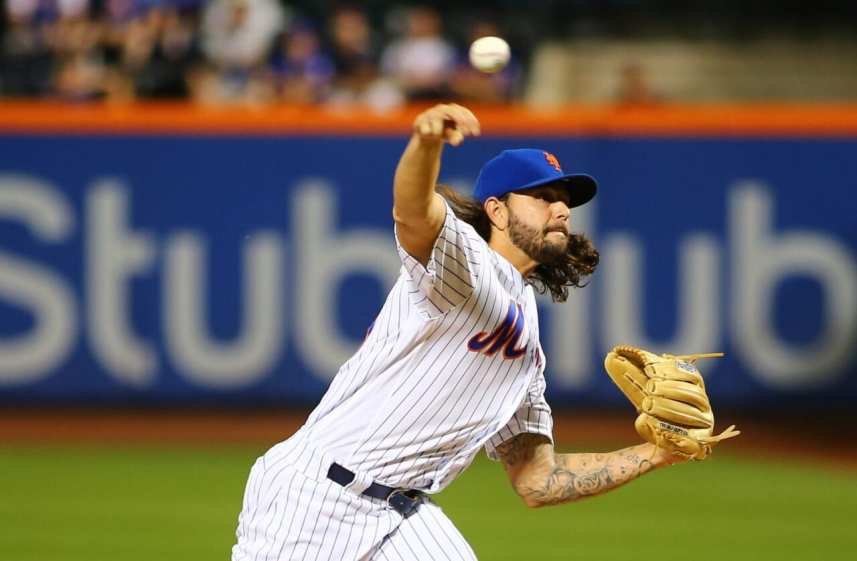
If the New York Mets want to be competitive and secure a spot in the playoffs, they need their bullpen to be deep. Sure, we know that Seth Lugo should be stellar and that Dellin Betances should have an amazing season if healthy. They need more than just that, though.
The Mets need Justin Wilson to do what he did in 2019. They need, and we can’t emphasize this enough, rebound seasons from Edwin Diaz and Jeurys Familia. And they also need Robert Gsellman to be on his game.
Since breaking into the Mets’ 2016 roster with a 2.42 ERA in 44.2 innings, Gsellman hasn’t been particularly good. He was a starter in 2017 and had a 5.19 ERA, but he was decent as a reliever a year later (4.28 ERA in 80 innings.)
Last season, Gsellman put up a 4.66 ERA. While that number wasn’t good, he managed to regain some of his swing and miss from 2016: he struck out a career-high 8.48 batters per nine innings, in line with the 8.46 he had in 2016. The righty had disappointing numbers in K/9 in 2017 (6.17) and 2018 (7.88.)
Bumping slider usage drove the Mets’ reliever success
Basically, the Mets’ hurler increased the usage of his good slider (3.0 pVAL per Fangraphs) to 26.7 percent of the time and had a bump in fastball velocity (a career-high 95.7 mph.) Those are very good signs for the future, both for him and for the Mets.
Gsellman was ninth in barrels per plate appearance percentage (Brls/PA%) which is the percentage of plate appearances where a batter had a batted ball classified as a Barrel. He had a tiny 2.5 mark. He is difficult to square for opposing hitters, and the numbers back that up.
Gsellman was also 14th in all MLB in wOBA-xwOBA differential, with .032. It is a product of his .326 wOBA minus his .294 xwOBA. That indicates that, judging by quality and frequency of contact, he got unlucky in 2019. He deserved better than his 4.66 ERA. His 4.13 FIP is a good start, and the Mets know it.
The reliever was better in the second half (3.57 ERA) than before the break (5.07 ERA.) Perhaps we can see his final numbers in 2020 being closer to his second half. It would be huge for the New York Mets.